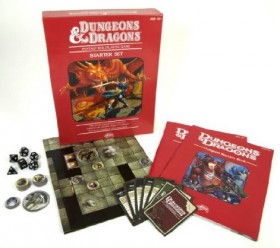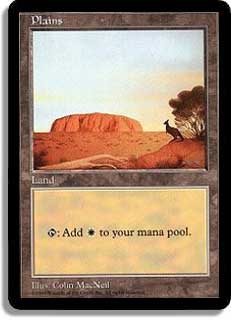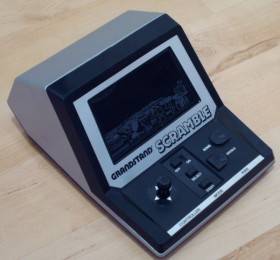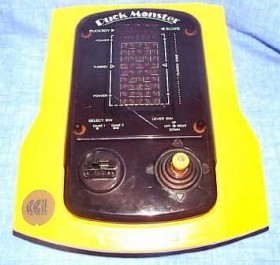I’m sick and a bit miserable today, and spent the morning doing schoolwork. What better way to relax this afternoon than to crack open the new D&D Red Box and play through the solo adventure? As I do it I figure I’d review it as well, so you can decide if it is worth your $20…

As you can see, there is a fair amount of loot inside. The map folds out and will be used for the solo adventure. The two books (DM guide and players manual) are not very long (~35 pages on average) but are full colour and contains a lot of information. There are dozens and dozens of tokens and cards, but the quality could be higher (especially from the company that makes MTG). The dice are plain but functional. One of the better inclusions is not listed: four very attractive and full-colour character sheets.
The solo adventure is contained in the players manual, and is basically a 97-entry gamebook that you play through to create your character. I’ll be doing this first, so here goes…
I am instructed to take a few moments to imagine the basic information about my character, and to assign a name, gender and race. After a few moments, Jesper Richardson the male human is ready for adventure!
Immediately I am attacked by goblins, and I am given 6 different options as to what to do: melee, magic, backstab, healing, stealth or… something else. Without pause Jesper takes the last option (he’s thinking of perhaps mentally dominating the subhuman attackers) but… I am referred back to the previous entry in the absence of a DM.
Jesper casts a freezing burst spell and kills two of the three goblins instantly (I had to roll dice for this). Apparently I have chosen his role in life a wizard. I’m exposed to counterattack now, and find the combat mechanics a little too… not D&D. (At this point I’ll explain I own and have read all the 4e manuals and think D&D has strayed too far from it’s roots…)
Is that a typo in entry 21? Shouldn’t that AC be 10?
Scaring off the remaining goblins gave me 100 XP. In D&D 4e encounters are worth XP, as opposed to creatures. It is a subtle difference, but significant if you wish to consider how the game has changed.
Another error: I never got hit by a Goblin, so I skipped the entry that introduced hitpoints and constitution. Very inexperienced players would be extremely confused at this point if they had rolled my numbers. Not good, Wizards Of The Coast, not good!
The next few entries help establish the alignment of my character. Intriguingly, the game prevents the player from being evil-aligned. Interesting to see the current solution to the age-old argument of should players play evil characters is a straightforward “no”. Jesper himself is apparently good, although not too good. He will help the merchant retrieve what the goblins had stolen.
Oh, now they have a fix for the constituion problem from above. I still think the design could have been less confusing. These next few entries help decide my skills, which end up including History and Insight. Very fitting for a member of the “4e Diogenes Club”.
I’m in general impressed with how they have designed this product, although the actual ‘game’ part of the gamebook is more or less nonexistent. But it is a clever pseudo-randomizer for character design, and even introduces non combat skills. For instance, I just used my diplomacy skill to obtain the location of the major villian from a dying goblin.
In real life, Jesper would never do such a thing. He’d mentally dominate 🙂
Now I’m writing down all my equipment. How amusing that Jesper (and in fact every character) carries 50 feet of rope with him at all times! Good to see the inherent unrealism of even the mundane aspects of the game seems to have continued. A later entry requires a die roll to decide the additional language Jesper speaks, and – again appropriately – the result is “Deep Speech (the language of horrible monsters of the deep earth)”. I’m going to just go ahead and assume that Cthulhoids speak that as well!
Ok, now things get a little clumsy. Only in the penultimate entry does it tell me to open up the map, and instructs me to place myself and some goblins on the map and then fight them. Only rudimentary rules are provided, and it is more or less left up to me to carry out the fight. Here is a weakness in the product: a large component of D&D 4e is the tactical combat (played out on a map) and this introductory set does a very poor job of introducing this to the player. Thumbs down.
And that’s that for the player’s manual; a very brief introduction if ever I have seen one. Is it any good? Well it does a fair job of helping a new player create a character, especially by not overwhelming them with choices, but doesn’t do much of a job at all of introducing the combat. I suppose one could say that no D&D product ever has (since that is up to the DM and the game itself), but this is in nothing more than glorified character creation and in way a “solo adventure” (as it is advertised on the box). It barely even uses most of the contents of the box.
In other words, as a solo-game, this gets a failing grade.
On the other hand the DM guide seems fairly robust (it is about 60 pages, all in colour) and there certainly seems to be enough content in this entire package to design and run a decent introductory adventure for far less than the cost of buying all the hardcover manuals separately. So in that regard, I suppose this box set could be considered a success.
As a last comment, the nostalgia value of the product is much lower than the packaging may suggest. Very little beyond the box design harkens back to the red box of our youth. So don’t buy this thinking to rekindle old memories – this is strictly a cutely packaged introduction to D&D Fourth Edition.



